I’m down - elbows, knees, pride on the ground, moving in what can only be described as a slither through a small opening in a large stone covered in paper slips. What looks like a lanky, laboring army crawl is actually a plea to the metaphysical powers that be to quit messing around and dispatch the L of my L, already!
I’m at Yasui Konpira-gu shrine performing a dainty little ritual to break off bad relationships and initiate good ones. Apparently, people come here from far and wide to shake off the losers and call in true love.
Public humiliation aside, the beauty of this excursion was that all of 4 minutes prior to finding myself in an army crawl, I’d never heard of Yasui Konpira-gu. We were strolling through the Gion district without an itinerary when I skimmed the description of the shrine and decided it was a worthy endeavor.
One minute you’re jonesing for a soft serve, the next you’re ritualistically slithering with an audience. Quite literally a new adventure behind every turn. This was the theme of our time in Kyoto, it was a case study in the beauty of a loose itinerary that leaves room for ~adventure~.
The very best things in Kyoto - the vast majority of the things on the list below - were not planned. They weren’t pulled from a peripheral friend’s Google Map, nor sourced from my ‘Japan’ saved folder on Instagram. We stumbled into them with the same curiosity that brought us to all fours at Yasui Konpira-gu.
Kyoto is walkable, it’s naturally and architecturally beautiful, and it’s punctuated by shrines and shops and food venders begging to be explored. As tempting as it is to build an itinerary that’s been planned and scheduled to within an inch of your life - please! Refrain! Trust that a place this stunning - naturally and culturally - will do a lot of the work for you, as long as you’re open to it.
Here’s a list of things we did and loved in Kyoto, three places per category. I think you’ll like them too, or maybe you’ll find somewhere even better while en route.
Eating
We stood in line for the omakase spot with rave reviews, we strolled through Nishiki market, we dabbled in every matcha-flavored sweet treat under the sun. And yet, the hole in the wall late night ramen spot we stumbled into was, of course, the stand out of our entire experience. My note for the place says “The cook’s family is here - 3 cute kids and a wife. Noticed the word ‘love’ scribbled on the wall behind the menu. Ordered 18 gyoza.” No reservation needed for any of the below:
Taiho Ramen-Kiyamachi - A hole in the wall, late night treasure. We came across this place after a few hours of drinking highballs on Pontocho Alley. It’s open from 5pm - 6am. Cheap, delicious (!), ramen, gyoza and cold Japanese beer on draft. When we were there the only other patrons were Japanese businessmen in suits and the cook’s family. 11/10.
Gion Kappa - Izakaya spot with small plates and floor seating (as in butts on the floor). Mix of locals and tourists. Portions were small but vibes were high. We were seated next to a table of sauced-up locals celebrating a birthday. When they stood up to leave a couple stragglers struck up a quick conversation with us. When they heard we were from New York one of them viscerally let out a high pitched “Oooooooh” followed by “city girls!”
Tonkatsu Shimizu - Nothing like traveling across the globe to cement your love for saucy fried meat and white bread. Katsu was a shining star of the Japan trip - we ate it at train stations, 711, street markets. Tonkatsu Shimizu is a katsu destination (see visual below for the only explanation you’ll need). The owner is a fallen angel who doesn’t speak much English but still managed to communicate without issue. He gave us a marker so we could add our signature to the scribble-covered walls. Naturally Jessie signed ‘City Girls’ to leave our mark.


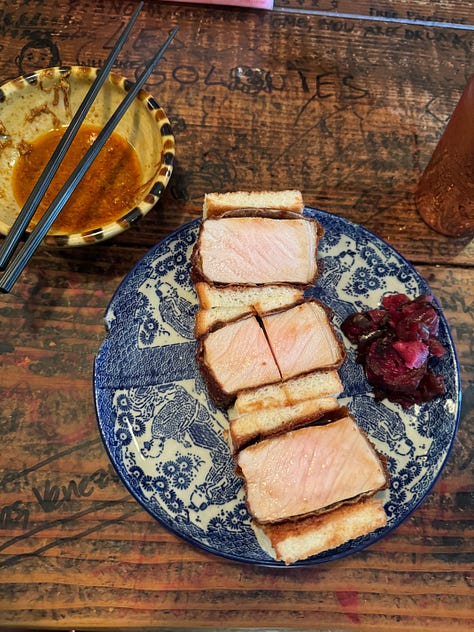
Drinking
Kyoto is sleepy relative to Tokyo but there are still plenty of places to consume 100 highballs each whilst marinating in cigarette smoke. We hit Pontocho Alley on our first night and *record scratch* didn’t get in anywhere. The bars are tiny and fill up fast - turns out, you need to go early or get a res (we eventually weaseled our way into Brown Sugar on our second night after Jessie slid into the DMs). Silver lining - our Pontocho fumble turned into an audible that unlocked some of the gems below. Here are 3 drinking destinations of note:
Rock Bar ING - My note for this place says ‘big stogey vibes.’ Be warned if you’re not into cigarette smoke - all of the record bars are smoker-friendly. There’s probably five or six tables in here and just the bartender and server holding it down. The server asked what we wanted to listen to and proceeded to play Houses of the Holy front to back, per my request for Led Zeppelin.
Kazubar - this place gives ‘dark and mysterious’ in bar form. It’s a small bar a couple blocks over from Pontocho Alley. The whole place is lit by about 10 small candles and is hidden behind a nondescript second-floor door. It’s a far cry from some of the cheesier (said with love! it’s part of the charm!) spots on Pontocho. To give you a sense for how discreet it is, we unknowingly sat outside the wrong place for about 10 minutes thinking it wasn’t open yet. Cool girl alert.
K36 - In stark contrast to the two places above, I give you a bougie hotel rooftop bar. You’ve seen this show before - expensive cocktails and picturesque views. It’s the rooftop of Hotel Seiryu, which is a dream in and of itself - more on that below. Get a reservation in advance if you’re aiming for sunset.
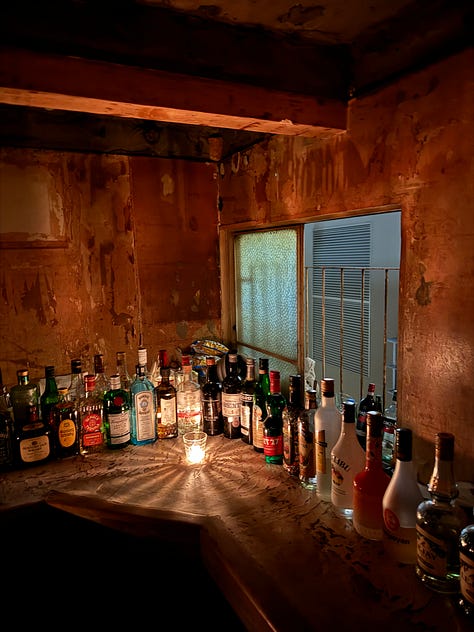

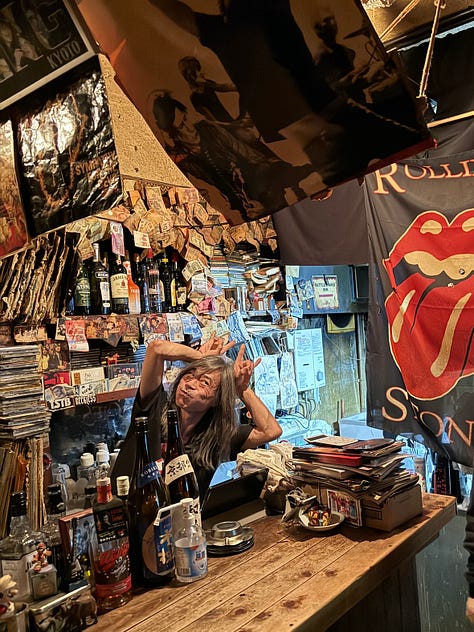
Culture
Please excuse me as I drop a stat from my Lonely Planet guide book - there are over 400 Shinto shrines and 1,600 Buddhist temples in Kyoto. Absolutely no shortage of ‘culture.’ However, at the risk of stating the obvious, it’s worth noting there are ways to experience Kyoto’s culture that extend beyond visiting shrines, temples or palaces. This list captures a bookstore, gallery and museum we were lucky enough to encounter during our short time here.
Kyoto Museum of Contemporary Art - tiny art museum in the Gion district that’s well-worth the quick walk-through. We had the place to ourselves which was a welcome reprieve from the otherwise packed-out tourist attractions of Japan. We saw a Marc Riboud exhibit that compelled three of the four of us to purchase a coffee table book on the way out.
Kikuo Shoten - rare bookstore on the west side of Kyoto - this wasn’t on anyone’s radar, we passed it on our way up to the Imperial Palace and popped in. It was a gold mine for old maps and prints - everybody walked away with a framer.
Yumekoubou Gallery - another place we happened upon, though this is more of a look, don’t touch situation. It’s a gallery full of Japanese antiques - tea ceremony ceramics, wood carvings, paintings I can’t remotely afford. There’s a big, beautiful bamboo installation outside by Tanabe Chikuunsai IV, who, we learned, comes from a long line of ‘bamboo masters’ (the more you know). He creates massive, woven bamboo structures that’ve landed in museums and galleries the world over.
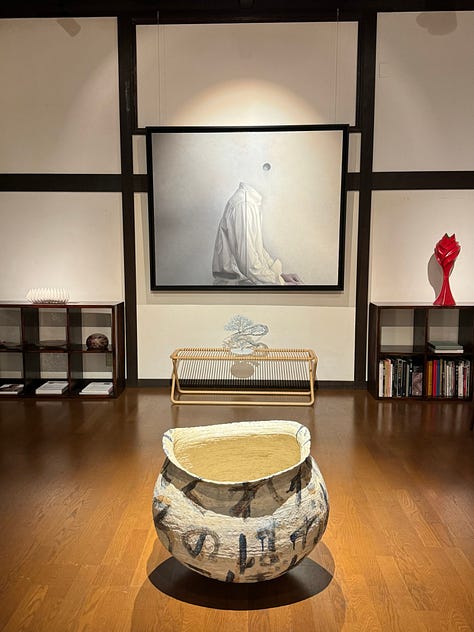
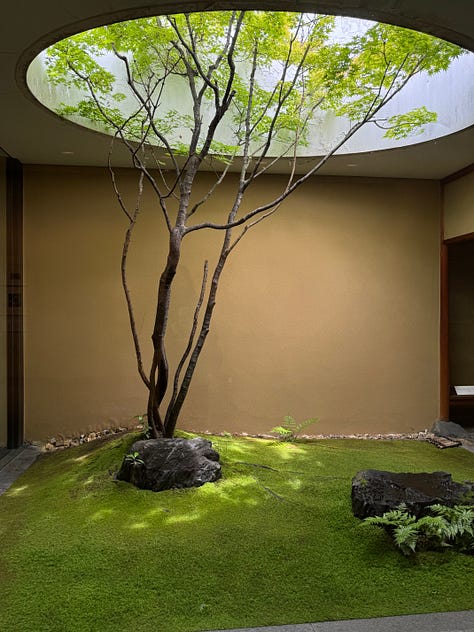

Shopping
Beyond our interest in ceramics, I wouldn’t say we ever set out to hardcore shop in Kyoto. As with most things here, we generally popped in and out of stores that showed up on our path. Favorites noted below:
Antiques for days in Gion - Gion is the ‘geisha district,’ it’s your picturesque historical district, so only fitting that it’s full of antique ceramics shops. If you put Yagi Art or Antique Yakata into your maps you’ll find yourself in an area with lots of antique shops to choose from. Prices were generally reasonable. Someday I will return and fill a full suitcase.
Kapital - this was a great rec from Jessie’s friend, very chic clothing store that seems to take inspo from the native tribes of the southwestern U.S. - eagles, fringe, southwestern geometric patterns. This place was also our first encounter with Habushu, a Japanese liquor with a snake at the bottom of the bottle - more on that in the Tokyo post.
Big time vintage - Big vintage spot not far from Nishiki market. Another Jessie friend rec. Decent price points (relative to New York 🥴) - lots of 70’s era American wares.



Touring
Think of this as ‘the beginners guide’ to Kyoto attractions (me, hi, I’m the beginner). These are the headliners we prioritized for our first Kyoto visit. If the crowds were any indication - I would venture to assume most international tourists had the same idea.
Fushimi Inari - one of the most iconic shrines in Japan - thousands (!) of bright vermillion gates stacked up a lush green mountain. It takes about 1.5/2 hours to hike. Go early, leave happy. We got a perfect weather day and managed to beat the crowds. Everything works out for us.
Philosophers Path - after Fushimi Inari we took a train to a city bus to get to the start of Philosophers Path and then we walked back down into central Kyoto along the path (30,000 step day 📈). About half-way down the path we ran into a man making little leaf boats. He called us over and instructed us to pick a boat and toss it into the water - if the boat floats, apparently you live a happy, lucky life. He threw his arms up and exclaimed, through broken english, “Happy! Lucky!” as each of our boats proved their buoyancy. He didn’t want any money, just there for a good time.
Arashiyama Bamboo Forest - as with everything in Kyoto - go early to avoid the hoards. Once you walk through the bamboo grove you can make your way up to a little vista path with views out into the surrounding mountains (don’t do what we did and walk up a steep hill that effectively led to a barbed-wire fence. The vista walk is paved, marked, and obvious - prayers up).

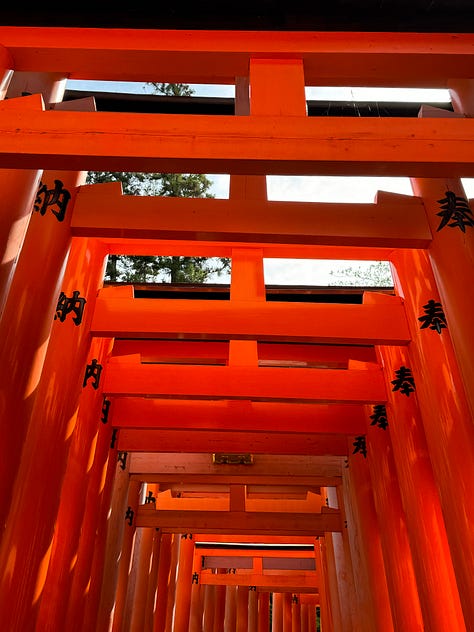
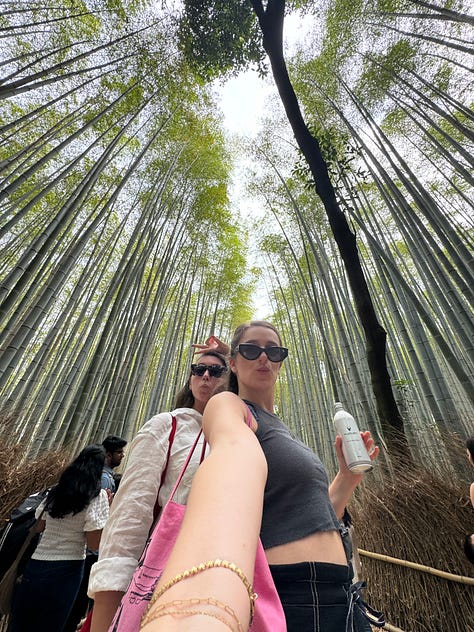
Sleeping
Our Kyoto accommodations were a big time ‘treat yourself’ moment. Lux, gorgeous, wonderful. Shoutout to EB for booking so we could treat ourselves like the queens we are.
Hotel Seiryu - built in a refurbished school building from the ‘30’s, this (chic) hotel has charm for days. What were once classrooms are now luxurious hotel rooms with views of the Yasaka Pagoda. We frequented the lounge on the ground floor that serves coffee, tea, wine and pastries for most of the day into evening and we woke up to a three course breakfast every morning. No notes.
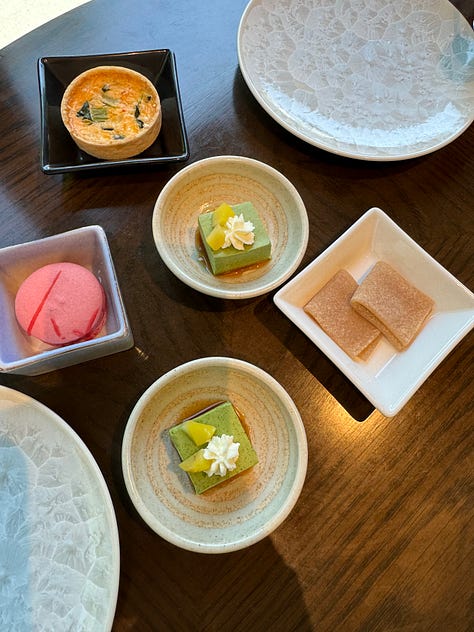

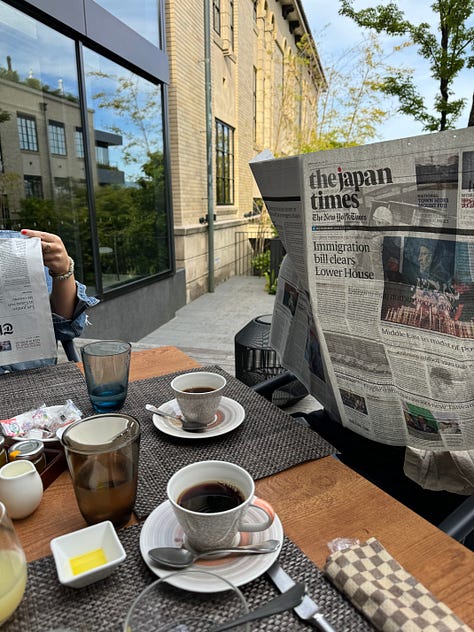
Bonus: off the beaten path*
One afternoon I picked up a Popeye magazine Kyoto city guide in the chic lounge area of our chic hotel and put Google Translate to work. We had a relatively open afternoon the next day that we’d reserved to see the Imperial Palace and I wanted some last-minute inspo/recs in that area of town. The result was my favorite Kyoto afternoon, which consisted of a long walk up to the Imperial Palace with, you guessed it, lots of meandering.
[Record shop] Meditations - music is spiritual, so I can appreciate this place’s literal interpretation with their interiors - framed photo of Jesus et al. The records are not religious - mostly house, psychedelic and techno. It’s right next to Tonkatsu Shimizu (the katsu spot detailed above in the ‘Eating’ section), worth a quick bop if you’re in the area.
[Bakery] Bonne Volonté - I spotted this on our way to Kafe Kosen (below), and had to give them my money. Expect more fluffy/doughy buns and rolls than flaky pastry but it’s damn delightful either way. Sucker for a quaint, local shop (+ a sweet treat!!).
[Coffee] Kafe Kosen - serious-biz coffee shop with vintage brewing apparatuses and single origin beans. I had my first coffee soda here (coffee + sparkling water + lemon + mint + little bit of simple syrup) - stunner.
*This is off the tourist circuit, a reprieve from the side of town with the majority of the hotels and attractions. Rest assured, these places are all on a busy, paved road in central Kyoto, but this felt like an area where people actually lived, which is how I prefer to experience a city.
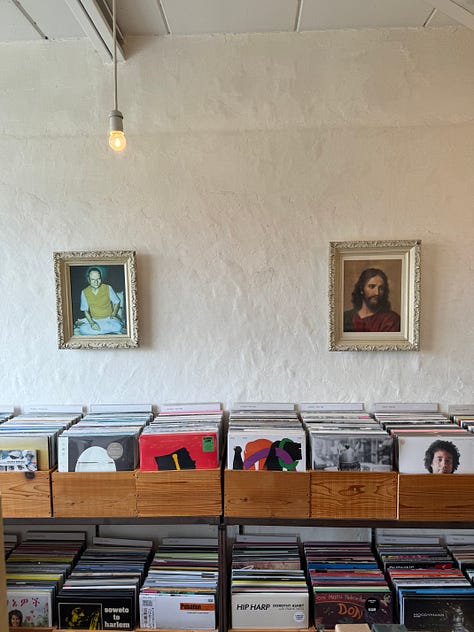

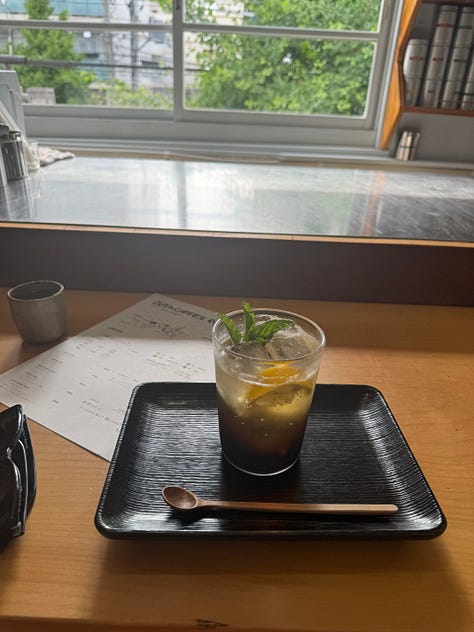
As we walked around Kyoto Audrey made-up a song and sang it over and over on loop (a real treat for the rest of us!). The lyrics were simply - “Kyoootoooo, I love youuuuuuu.”
Couldn’t have said it (sang it?) better myself.
More soon xX




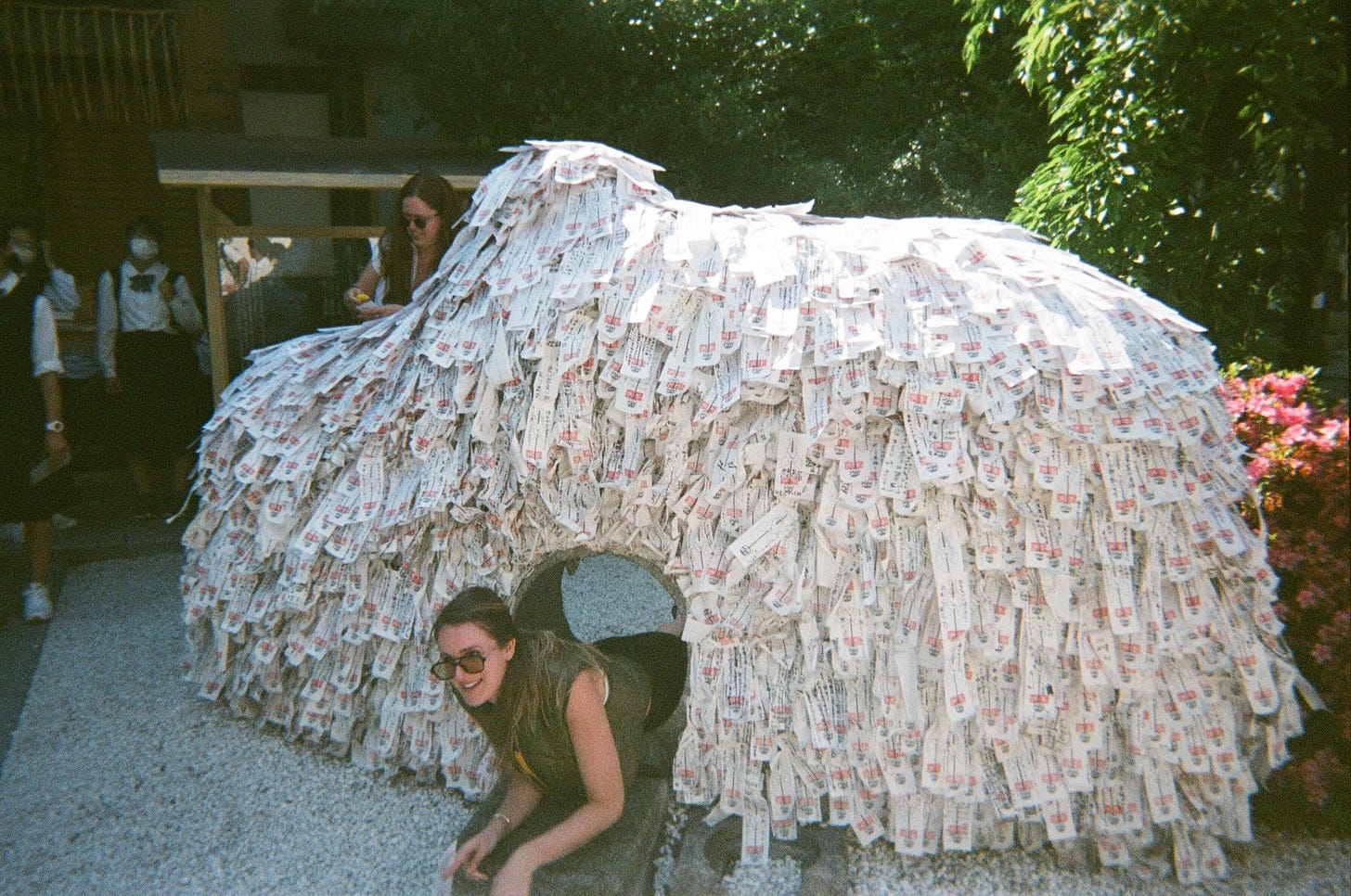
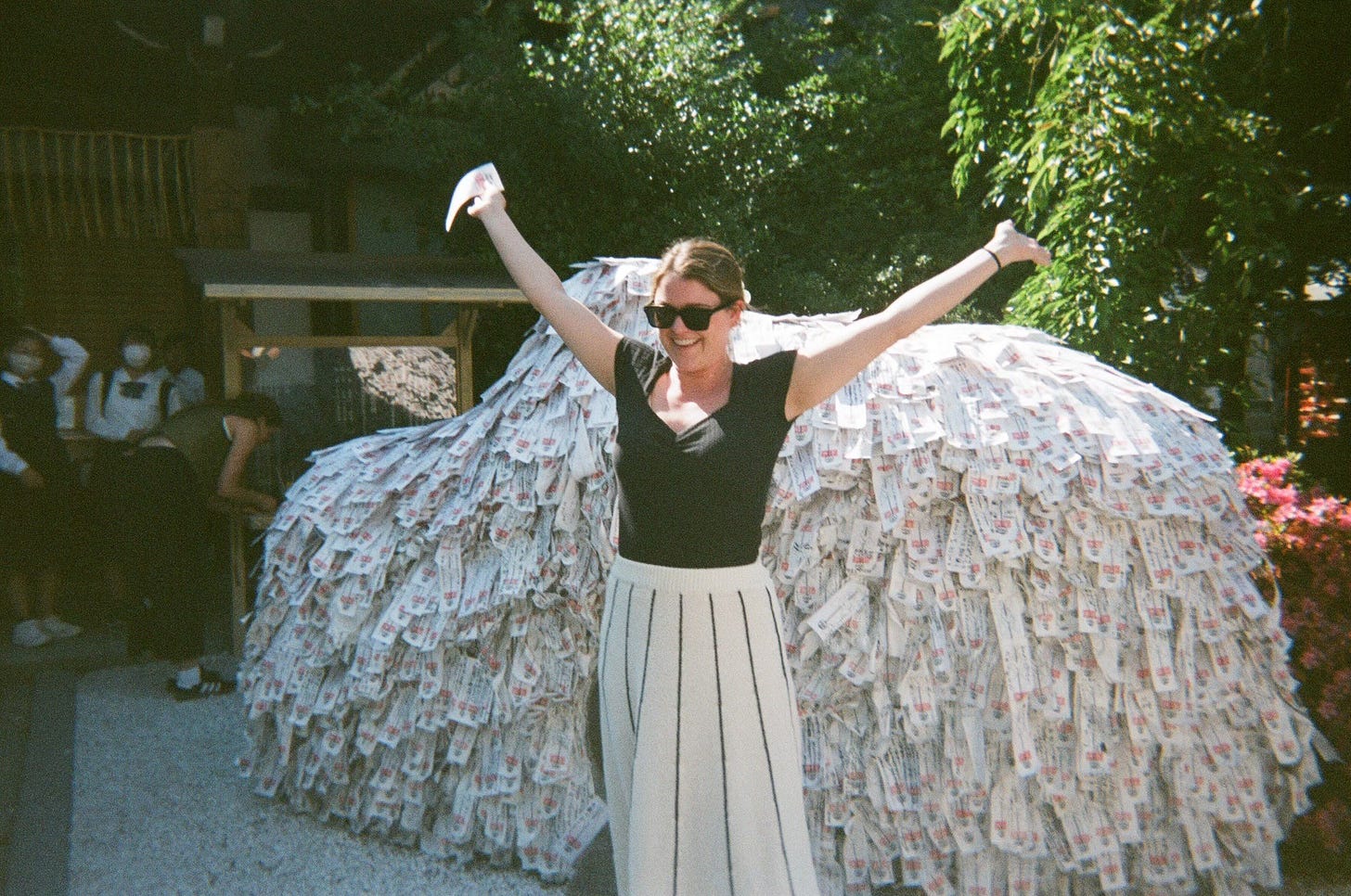
city girls forever 🤘🏻
hot tip! dont use the bathroom at Taiho!